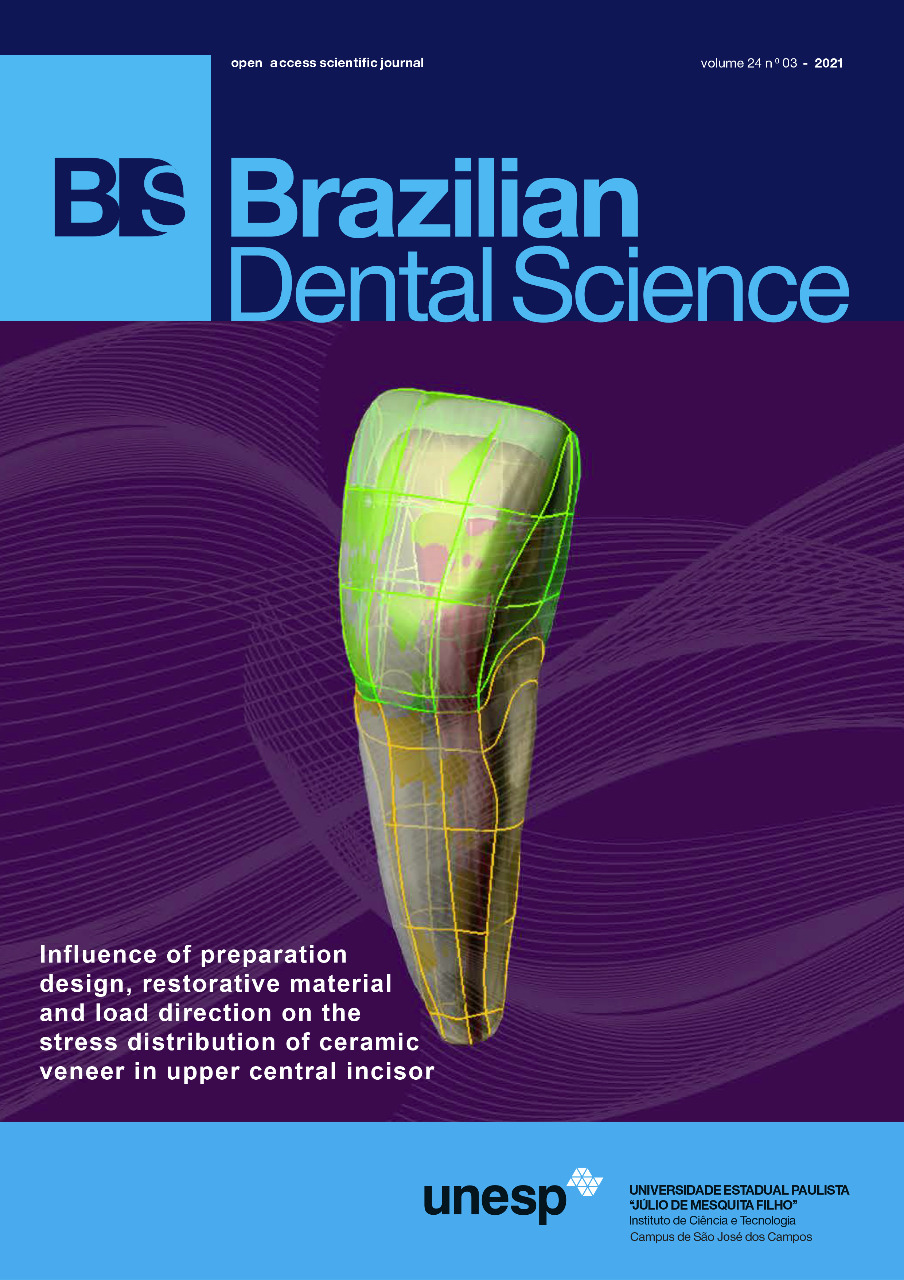Effect of Black and Green Tea on Salivary pH: a Double Blinded Cross-Over Study
DOI:
https://doi.org/10.14295/bds.2021.v24i3.2459Resumo
Background: Some herbal products could affect on salivary pH and prevention of dental caries. Tea consumption has inhibition effects on some oral bacteria. Objective: The aim of this study was to evaluate the effect of green and black tea on salivary pH. Material and Methods: In this double blinded cross-over trial, salivary samples of 50 healthy male students of Zahedan Faculty of Dentistry, aged 20-22 years old were collected for evaluation of salivary pH. All volunteers were asked to consume commercially black tea on the first day and then saliva samples were collected before drinking tea and immediately after drinking tea and 5 and 10 minutes after tea consumption. With replacing consumption of green tea, at the second day, saliva samples were collected again. Then the salivary pH was estimated with a digital pH-meter. Data were analyzed through independent t-test and paired samples t-test. Results: Mean salivary pH before and after green tea consumption were 7.15±0.05 and 7.56±0.09, respectively, which showed a remarkable difference (p<0.001). It was 7.14±0.05 and 7.51 ± 0.10, respectively, for black tea, with significant difference (p<0.0001). Mean salivary pH after green tea consumption was significantly higher than black tea (p= 0.006). Conclusion: Both green and black tea intake led to a significant rise in salivary pH, which was higher after green tea consumption compared to black tea. This study suggests the beneficial effects of drinking tea in providing an alkaline environment in oral cavity.
KEYWORDS
Black tea; Green tea; Saliva; pH.
Downloads
Downloads
Publicado
Como Citar
Edição
Seção
Licença
TRANSFERÊNCIA DE DIREITOS AUTORAIS E DECLARAÇÃO DE RESPONSABILIDADE
Toda a propriedade de direitos autorais do artigo "____________________________________________________________________" é transferido do autor(es) para a CIÊNCIA ODONTOLÓGICA BRASILEIRA, no caso do trabalho ser publicado. O artigo não foi publicado em outro lugar e não foi submetido simultaneamente para publicação em outra revista.
Vimos por meio deste, atestar que trabalho é original e não apresenta dados manipulados, fraude ou plágio. Fizemos contribuição científica significativa para o estudo e estamos cientes dos dados apresentados e de acordo com a versão final do artigo. Assumimos total responsabilidade pelos aspectos éticos do estudo.
Este texto deve ser impresso e assinado por todos os autores. A versão digitalizada deverá ser apresentada como arquivo suplementar durante o processo de submissão.




























